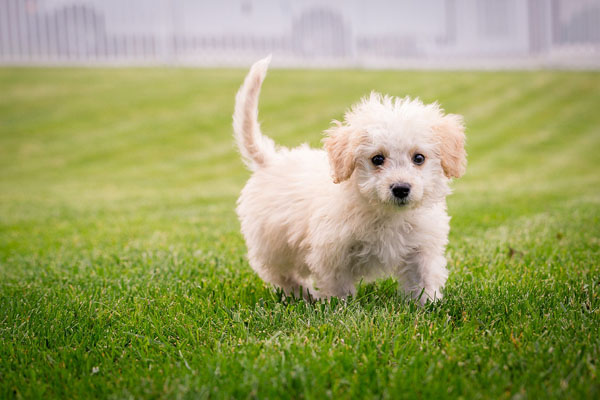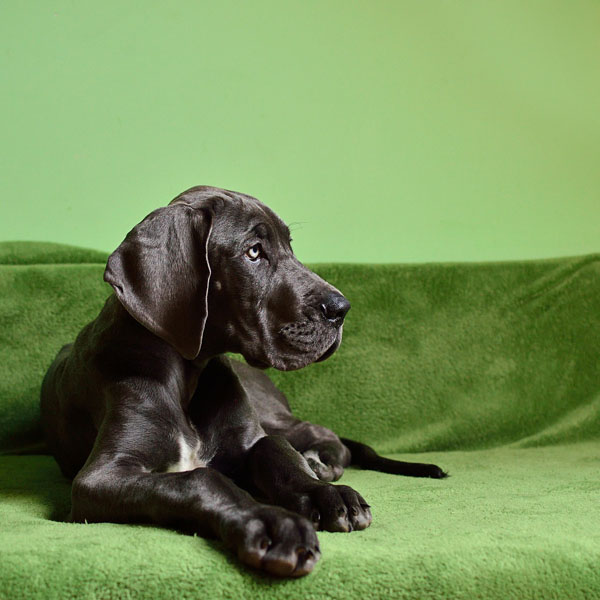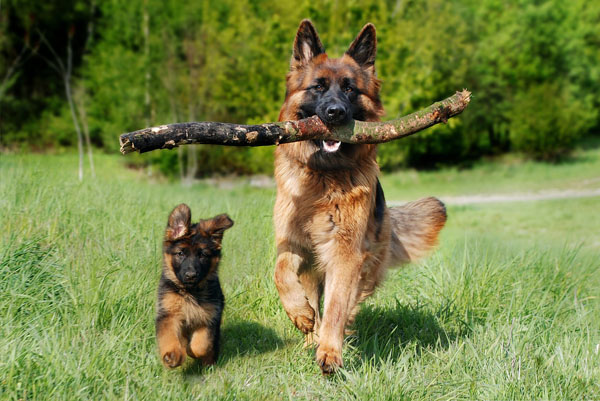Do Dogs Continuing Growing After a Year
Nothing beats puppies. (Well, maybe kittens) They're bundles of energy with soft, fluffy coats. You get to experience the excitement as they explore the world around them. And you slowly replace the important puppy essentials as they get bigger…and bigger…and bigger. Many dogs retain the playful puppy personality into adulthood, but nothing slows down that increase in size. Even tiny breeds get a little larger after birth. As you make that third trip to the pet store, you're probably wondering: when will it stop? You'll find a few different theories about how to determine a puppy's final size. And some are more accurate than others. Dog growth isn't a simple concept. But if you'd like to know how big your puppy will turn out in the end, we can help you solve the puzzle.
Puppy Development
Regardless of which breed you have tumbling around the house, all puppies undergo the same changes. Dog growth is broken into five stages, with basic "landmarks:"
- Newborn-2 Weeks: This is the neonatal phase. During this period, puppies double their weight.
- 2-4 Weeks: The transitional stage. Eyes open, and puppies start walking. They also get their baby teeth.
- 4-12 Weeks: Now we're into the juvenile phase. You see the most rapid dog growth here. It's also when they play and run the most, building muscle.
- 6-12 Months: Adolescence (congratulations – you have a teenager!). Growth slows down, but sexual maturity hits (time to spay or neuter). And that lovely puppy fur swaps out for an adult coat.
- 1-2 Years: You now have a mature dog. Dog growth stops, though muscles continue to strengthen.
Now, you probably noticed some dramatic ranges for each stage. Why? Because while every dog goes through the same five phases, the timing isn't always the same.

Breed and Dog Growth
The size of your breed plays a big part in how fast they grow. If your body doesn't need to get as big, it takes less time to do so, as you can see below.
| Breed Size | Age to Full Growth |
| Small | 6-8 Months |
| Medium | 12 Months |
| Large | 12-18 Months |
| Giant | 24 Months |
So you know when your cuddle bug will finish growing (that's helpful). But HOW big will they get? That answer is a little trickier.
Figuring Out Dog Growth
People have a lot of theories on deciding how big a puppy will be. It's a helpful answer to know. You can start planning for your final harness, dog bed, and toys. Not to mention making sure your house has room to contain all the energy of a playful pup. Many suggest looking at the size of your puppy's paws as an indicator of dog growth. Others tell you to look at the parents (which works if you know who they are). And some even recommend checking the amount of excess skin your canine's carrying. Which works best? Let's work through them and find out!
Puppy Bones
First, though, let's understand the mechanics of dog growth. As we've already noted, your dog's muscles grow their entire life. They gain strength and refine through exercise – the same as ours. So you can't get much information from muscle. You need to look somewhere else.
And bones are the answer. Once your dog reaches maturity, bones stop growing. Before that, they expand from the growth plates. Growth plates are thin areas of cartilage where new bone tissue gets laid down.
The growth plates are SOFT and fragile. As such, you need to protect your puppy from falls and injuries. A break at the plate can hamper growth in that leg. Too MUCH exercise also strains them. "It is imperative to know that exercise, prolonged activity, like jogging, can be extremely detrimental on the bones and joints of growing puppies," says Dr. Jerry Klein, Chief Veterinary Officer at the American Kennel Club.
Once the growth plates finish laying down new bone tissue, they calcify (harden) and close. After that, growth stops. Your dog reaches their final size.

The Paw Theory of Dog Growth
Many believe that large feet match up with a taller height and a larger weight. It's a good theory. The bigger a dog's foot, the more weight it should support. Itty-bitty dainty feet won't hold up a Great Dane.
On the flip side, if your puppy has delicate toes, you expect a tiny pup. Massive feet on a Chihuahua wouldn't make sense. (The poor thing wouldn't stand a chance of walking)
But the paw theory of dog growth has some flaws. Collies have dainty feet. They're larger dogs, but they need to move swiftly through sheep herds. The smaller foot profile allows them to do so. And Bulldogs have enormous paws that support their heavy frames. The feet are larger than their final size.
So you can look at your pup's feet as a guess, but don't assume big (or small) feet tell the entire story.
Excess Skin as a Dog Growth Indicator
Then again, some people suggest you look at the amount of loose skin on your puppy. If you're seeing plenty of "wrinkles" hanging around, you know you're going to have a larger puppy.
Similar to the paw theory, there's some merit to this idea of dog growth. Your dog WILL fill out that space as the bones grow. But if you have a wrinkly dog, such as a Shar-Pei, the loose skin belongs there. And it's going to grow WITH your puppy.
Which sends you to look at your dog's breed. It's the most accurate indicator of dog growth.

"Are You My Mother?"
If you know and have seen your puppy's parents, you have a good idea of how large your puppy will get. You can talk with the breeder about the family history and get an idea of heights and weights. Typically, boys get larger than girls, so keep that in mind.
But what if you adopted your dog from a rescue or shelter? You're flying blind when it comes to that dog growth question. Or are you? Dog DNA kits can help fill in the blanks. Many not only offer insight into the breeds that contribute to your unique pup, but they can let you know the size to expect for a healthy dog.
If you want to skip the test, you can still make an educated guess. Run your hands down your dog's rib cage. Do you feel the "knobs" of the ribs? That tells you your pup's still working to grow. Those "knobs" represent the growth plates for the ribs. So if they're still working on finishing laying down calcified bone, so are the long bones in the legs. It's a handy test you can do that's free of charge. (Though it won't tell you HOW much growth remains, unhappily)
Bigger Every Day
Trying to piece together how large a puppy may get can get tricky – especially if you aren't sure about your pup's background. But you know, roughly, when they'll finish with the dog growth phases. And as you check those ribs, you'll start to feel the growth plates closing. It'll help you gauge the final size a little better.
Or perhaps you know the pedigree of your puppy. So you have a good idea of how big they'll get from DNA testing or family research.
Either way, you get the joy of seeing those puppy paws explore something new each and every day.
Source: https://www.boneandyarn.com/dog-growth/
0 Response to "Do Dogs Continuing Growing After a Year"
Post a Comment